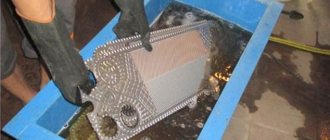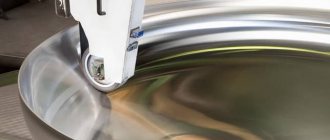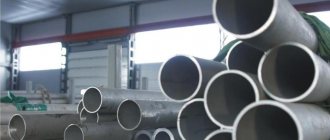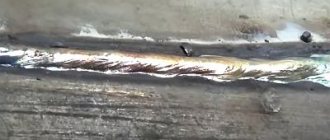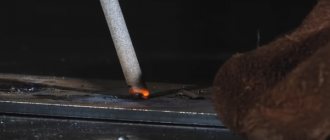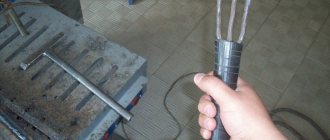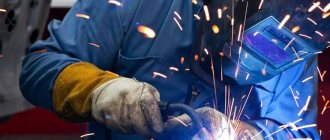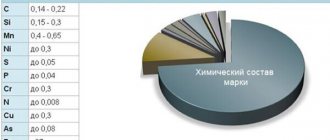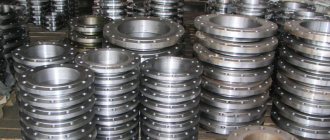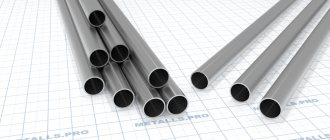Characteristics of steel
Steel 12Х18Н10Т has unique characteristics. Since this is combined with a very affordable price, this makes it indispensable in its own way. Welding of steel 12Х18Н10Т is carried out during various works. Stainless steel, as this brand is called, has high strength and environmental friendliness. Such qualities are ensured by the variety of chemical elements that are included in its composition.
The largest percentage of its content is iron. Chrome provides high resistance to corrosion, and nickel provides high resistance to the negative effects of acids and alkalis. The presence of titanium and silicon leads to the formation of ferrite, which eliminates the possibility of corrosion in welds.
Characteristic are the mechanical properties of steel of this grade, which undergo changes when hardening at elevated temperatures, which is in principle recommended. Characteristics such as impact strength and heat resistance expand the scope of its application.
If you use the appropriate electrodes for 12Х18Н10Т, then it becomes possible to weld such products as:
- sheets of various thicknesses - hot-rolled and cold-rolled;
- pipes, not only round, but also profiled with different sections;
- channel;
- corners;
- ground and calibrated rods;
- stripes and ribbons;
- circles;
- heat-treated wire;
- small capillary tubes;
- forgings;
- forged blanks.
Steel 12Х18Н10Т can be used for particularly critical structures. Its environmental friendliness allows it to be used for seamless pipes involved in food production and processing, as well as in the petrochemical and gas industries.
12Х18Н10Т electrodes for welding this type of steel must have a composition close to that of stainless steel.
Welding technology 12Х18Н10Т
kopeysky , In principle, submerged arc welding is a good option if you can perform preliminary welding from the inside. When welding on a stainless steel backing ring, unlike black steel, oxides are formed at the root, which prevent you from getting an x-ray. You can either semi-automatically weld the root of the seam from the reverse side, then cut out the oxidized layer from the front side to a metallic shine and weld it under submerged arc completely (you need to calculate the time, it may be faster than welding completely semi-automatically, plus quality). Chamfer is required (GOST 16037-80 - for semi-automatic or GOST 8713-79 - submerged arc welding (AFsh welding method - with preliminary application of a weld seam)). Or make a groove and pass the root from the front side in one layer using a semi-automatic machine, and then fill the groove and line it with flux (if the requirements for the formation of oxides in the root of the weld are strict, then before passing the root with a semi-automatic machine, you need to fill the vessel with a welding mixture or pure argon). This is if there is no requirement for resistance to ICC - intergranular corrosion and ferrite phase content. If resistance to MCC and control of the content of the ferrite phase are specified in the documentation for the manufacture of the product, then it is better not to use submerged arc welding. When I weld bends at my place for resistance to MCC and control of the ferrite phase, we weld them semi-automatically in a mixture of 2.5% CO2 + 97.5% Ar using Ok Autrod 318Si wire with a diameter of 1.2 mm. When selecting a wire grade, you need to calculate from the Scheffler diagram what material will be obtained when mixing the additive material with the base material (the metal should fall into the austenitic region containing 5% of the ferrite phase). Plus, the grade must contain 1% Nb or Ti - to reduce the likelihood of chromium carbides falling out along the grain boundaries of the metal and, accordingly, depletion of the grain boundaries in chromium (reducing the likelihood of intergranular corrosion). Welding should be carried out at a feed rate of no more than 6.5 m/min, the color of the deposited metal should be pink (this means that the ligature did not burn out during welding, i.e. we did not overheat the seam during welding). I think that you don’t have to steam it, but cook it under a submerged arc. In all cases, it is necessary to clean and degrease the cutting surfaces, the inner and outer sides of the joint to a width of 20 mm from the seam. The use of welding on a backing ring for submerged arc welding of black steels will not work here.
Post edited by MityMouse: 05 September 2014 15:44
Electrodes
Electrodes for steel 12Х18Н10Т are intended for welding chromium-nickel steels. These consumables can be used to connect products in any spatial position. Reverse polarity and direct current are selected as the required modes. The choice of alternating current is, in principle, possible, but it is not always advisable. The heat input, that is, the rate of current transfer from the arc to the metal, must have a minimum value.
It is recommended to form seams of small cross-section. To do this, use welding wire with a diameter of up to three millimeters.
Electrodes for welding 12Х18Н10Т have the following advantages:
- arc stability;
- slight metal spattering;
- normal seam formation;
- easy separation of slag from the surface.
Since the electrical conductivity of stainless steel is low, the electrode stickout should be small. You can use various technologies for the welding process, for example, such as semi-automatic welding in a protective gas environment, contact welding. It is best to use argon as a shielding gas.
There is a large selection of different types of consumables, which are electrodes for welding stainless steel 12Х18Н10Т. There are differences depending on which type of current is selected.
Supply
Are you interested in the features of welding stainless steel 12Х18н10т? Welding of stainless steel 12Х18н10т from the supplier "Auremo" complies with GOST and international quality standards. The supplier "Auremo" offers to buy quality products. Big choice. Optimal price from the supplier. Buy today. For wholesale customers there is a preferential price. Buy in bulk or in installments.
Buy, favorable price
The supplier Auremo is a recognized expert in the metals market. Thanks to representative offices in Eastern Europe, we have the opportunity to quickly interact with trading partners. The experience of the supplier "Auremo" will allow you to buy any metal at the optimal price. The product range includes heat-resistant alloys, alloy steel, and structural alloys. It is easy to buy any metal products from us. — a reliable supplier of rolled metal products invites everyone to partner cooperation. We have the best price-quality ratio. All products are certified. The courier service will deliver the order as soon as possible. The best price from the supplier.
Electrodes for stainless steel with direct current
One of the most popular brands is TsL-11. These electrodes have a basic coating and can be used for welding steels with increased strength. They are also successfully used for welding products made of chromium-nickel steel. The advantage of these electrodes is that the seam created with their help has strength and ductility.
For connections in products that will be operated at elevated temperatures, OZL-8 brand electrodes should be selected. The range of sizes of such electrodes is 3.0; 4.0; 5.0 millimeters. NZh-13 electrodes are suitable for welding products used in the food industry.
The advantage is that a thin crust of slag is formed, which falls off on its own. Electrodes of the ZIO-8 brand, having a rutile-base coating, are used for heat-resistant steels. NII-48G electrodes are used to carry out work on structures that have important purposes. For products that will be used in an environment with phosphoric or sulfuric acid, the choice should be made of electrodes of the OZL-17U brand.
Directory of stainless steel products
/ Directory of rolled metal products / Stainless steel rolled products /
Welding with domestic electrodes
Welding of high-alloy steels and alloys on iron-nickel and nickel bases is carried out by two types of electrodes: electrodes for welding corrosion-resistant materials and electrodes for welding heat-resistant and heat-resistant steels and alloys.
According to the current classification, high-alloy steels include alloys in which the iron content is more than 45%, and the total content of alloying elements is at least 10%, counting at the upper limit with the concentration of one of the elements at least 8% at the lower limit. Nickel-based alloys include alloys containing at least 55% nickel. An intermediate position is occupied by alloys based on iron-nickel.
In accordance with GOST 10052-75, electrodes for welding high-alloy corrosion-resistant, heat-resistant and heat-resistant steels and alloys are classified into 49 types based on the chemical composition of the deposited metal and the mechanical properties of the weld metal and deposited metal (for example, electrodes of type E-07Х20Н9, Е-10Х20Н70Г2М2Б2В , E-28Х24Н16Г6). The deposited metal of a significant part of the electrodes is regulated by the technical conditions of the manufacturing enterprises.
The chemical composition and structure of the deposited metal of electrodes for welding high-alloy steels and alloys differ - and sometimes quite significantly - from the composition and structure of the materials being welded. The main indicators that decide the issue of choosing such electrodes are to ensure: the basic operational characteristics of welded joints (mechanical properties, corrosion resistance, heat resistance, heat resistance), resistance of the weld metal to cracking, and the required set of welding and technological properties.
Electrodes for welding high-alloy steels and alloys have coatings of basic, rutile and rutile-basic types. Due to low thermal conductivity and high electrical resistance, the melting rate, and therefore the deposition rate of electrodes with rods made of high-alloy steels and alloys, is significantly higher than that of electrodes for welding carbon, low-alloy and alloy steels. At the same time, the increased electrical resistance of the metal of the electrode rod necessitates the use of reduced current values during welding and a reduction in the length of the rods (electrodes) themselves. Otherwise, due to excessive heating of the rod, the coating may overheat and the nature of its melting may change, even to the point of individual pieces falling off.
Welding is usually carried out with direct current of reverse polarity.
Electrodes for welding corrosion-resistant steels and alloys
Electrodes of this group provide welded joints with the required resistance to corrosion in atmospheric, acidic, alkaline and other aggressive environments.
Some brands of electrodes in this group have a wider range of applications and they can be used not only to obtain connections with the required corrosion resistance, but also as electrodes that provide high heat resistance and heat resistance of the weld metal.
| Electrode brand | Electrode type according to GOST 10052-75 or type of deposited metal | Diameter, mm | Main purpose | Additional or related applications |
| 1 | 2 | 3 | 4 | 5 |
| UONI-13/NZH 12X13 | E-12X13 | 2,0; 2,5; 3,0; 4,0; 5,0 | Welding chromium steels type 08Х13 and 12Х13 | Surfacing of sealing surfaces of steel reinforcement |
| OZL-22 | E-02Х21Н10Г2 | 3,0; 4,0 | Welding of equipment made of steel types 04Х18Н10, 03Х18Н12, 03Х18Н11, operating in oxidizing environments like nitric acid | |
| OZL-8 | E-07Х20Н9 | 2,0; 2,5; 3,0; 4,0; 5,0 | Welding steels of type 08Х18Н10, 12Х18Н9 and 08Х18Н10Т, when the weld metal is not subject to strict requirements for resistance to MCC | |
| OZL-8S | 08Х20Н9КМВ | 2,5; 3,0; 4,0 | Welding steels of type 08Х18Н10, 12Х18Н9 and 08Х18Н10Т, when the weld metal is not subject to strict requirements for resistance to MCC | Welding with increased productivity |
| OZL-14 | E-07Х20Н9 | 3,0; 4,0 | Welding steels of type 08Х18Н10, 12Х18Н9 and 08Х18Н10Т, when the weld metal is not subject to strict requirements for resistance to MCC | AC welding possible |
| OZL-14A | E-04Х20Н9 | 3,0; 4,0; 5,0 | Welding steels of types 08Х18Н10, 08Х18Н10Т, 06Х18Н11 and 08Х18Н12Т, when the weld metal is subject to requirements for resistance to MCC | |
| OZL-36 | E-04Х20Н9 | 3,0; 4,0; 5,0 | Welding steels of types 08Х18Н10, 06Х18Н11, 08Х18Н12Т and 08Х18Н10Т, when the weld metal is subject to MCC resistance requirements | |
| TsL-11 | E-08Х20Н9Г2Б | 2,0; 2,5; 3,0; 4,0; 5,0 | Welding steels of types 12Х18Н10Т, 12Х18Н9Т, 08Х18Н12Т and 08Х18Н12Б, when the weld metal is subject to strict requirements for resistance to MCC | Welding of equipment made of steel types 12Х18Н10Т, 12Х18Н9Т, 08Х18Н12Т and 08Х18Н12Б for the food industry |
| TsL-11S/Ch | E-08Х20Н9Г2Б | 2,5; 3,0; 4,0 | Welding steels of types 08Х18Н10, 08Х18Н12Б and 08Х18Н10Т, when the weld metal is subject to requirements for resistance to MCC | Welding with increased productivity |
| OZL-7 | E-08Х20Н9Г2Б | 2,0; 2,5; 3,0; 4,0; 5,0 | Welding steel types 08Х18Н10, 08Х18Н12Б and 08Х18Н10Т, when the weld metal is subject to strict requirements for resistance to MCC | Welding of equipment made of steel types 08Х18Н10, 08Х18Н12Б and 08Х18Н10Т for the food industry |
| TsT-15 | E-08Х19Н10Г2Б | 2,0; 2,5; 3,0; 4,0; 5,0 | See group of electrodes for welding heat-resistant and heat-resistant steels and alloys | Welding steel types 12Х18Н9Т, 12Х18Н12Т, Х20Н12Т-Л and Х16Н13Б, when the weld metal is subject to strict requirements for resistance to MCC |
| TsL-9 | E-10Х25Н13Г2Б | 3,0; 4,0; 5,0 | Welding of two-layer steels from the side of the alloy layer from steels of type 12Х18Н10Т, 12Х18Н9Т and 08Х13, when the weld metal is subject to requirements for resistance to MCC | |
| OZL-40 | 08Х22Н7Г2Б | 3,0; 4,0 | Welding steel grades 08Х22Н6Т and 12Х21Н5Т | |
| OZL-41 | 08Х22Н7Г2М2Б | 3,0; 4,0 | Welding steel grade 08Х21Н6М2Т | Welding of steel grade 03X24N6AM3 is possible |
| OZL-20 | E-02Х20Н14Г2М2 | 3,0; 4,0 | Welding of equipment made of steel types 03Х16Н15М3 and 03Х17Н14М2, operating in highly aggressive environments | It is possible to weld equipment made of steel grade 08Х17Н15М3Т, operating in highly aggressive environments |
| EA-400/10U EA-400/10T | 08Х18Н11М3Г2Ф | 2,0; 2,5; 3,0; 4,0; 5,0 | Welding of equipment made of steel types 08Х18Н10Т and 10Х17Н13М2Т, operating in aggressive environments at temperatures up to 350 C, when the weld metal is required to be resistant to MCC | |
| NZh-13 | E-09Х19Н10Г2М2Б | 3,0; 4,0; 5,0 | Welding of equipment made of steel types 10Х17Н13М3Т, 08Х21Н6М2Т and 10Х17Н13М2Т, operating at temperatures up to 350 C, when the weld metal is subject to requirements for resistance to MCC | |
| NZh-13S | E-09Х19Н10Г2М2Б | 3,0; 4,0 | Welding of equipment made of steel types 10Х17Н13М2Т, 10Х17Н13М3Т and 08Х21Н6М2Т, operating at temperatures up to 3500С, when the weld metal is subject to MCC resistance requirements | High performance welding |
| NIAT-1 | E-08Х17Н8М2 | 2,0; 2,5; 3,0; 4,0; 5,0 | Welding steel types 08Х18Н10, 12Х18Н10Т and 10Х17Н13М2Т, when the weld metal is subject to requirements for resistance to MCC | |
| OZL-3 | 14Х17Н13С4Г | 3,0; 4,0; 5,0 | Welding of equipment made of steel 15Х18Н12С4ТУ, operating in highly aggressive environments, when the weld metal is not subject to MCC resistance requirements | |
| OZL-24 | 02Х17Н14С5 | 3,0; 4,0 | Welding of equipment made of steel type 02Х8Н20С6, operating in conditions of production of 98% nitric acid | |
| OZL-17U | 03Х23Н27М3Д3Г2Б | 3,0; 4,0 | Welding of equipment made from alloys of grades 06ХН28МДТ and 03ХН28МДТ and steel grade 03Х21Н21М4ГБ, mainly up to 12 mm thick, operating in sulfuric and phosphoric acids with impurities of fluoride compounds | |
| OZL-37-2 | 03Х24Н26М3Д3Г2Б | 3,0; 4,0 | Welding of equipment made from alloys of grades 03Х23Н25М3Д3Б, 06ХН28МДТ and 03ХН28МДТ and steel grade 03Х21Н21М4ГБ, mainly up to 12 mm thick, operating in sulfuric and phosphoric acids with impurities of fluoride compounds | |
| OZL-21 | E-02Х20Н60М15В3 | 3,0 | Welding of equipment made of alloys such as KhN65MV and KhN60MB, operating in highly aggressive environments, when the weld metal is subject to requirements for resistance to MCC | |
| OZL-25B | E-10Х20Н70Г2М2Б2В | 3,0; 4,0 | See group of electrodes for welding heat-resistant and heat-resistant steels and alloys | Welding of corrosion-resistant structures and equipment made of XN78T alloy |
Electrodes for welding heat-resistant and heat-resistant steels and alloys
General brief description
Electrodes of this group provide welded joints with the required heat resistance and/or heat resistance. Heat-resistant welded joints are compounds that are highly resistant to chemical destruction of the surface in gas environments at temperatures above 550-6000C. Heat-resistant welded joints are joints that operate at these temperatures in a loaded state for a certain time (heat-resistant joints must have sufficient heat resistance).
Some brands of electrodes intended for welding heat-resistant and/or heat-resistant materials are used for welding corrosion-resistant and dissimilar steels and alloys
| Electrode brand | Electrode type according to GOST 10052-75 or type of deposited metal | Diameter, mm | Main purpose | Additional or related applications |
| 1 | 2 | 3 | 4 | 5 |
| OZL-25B | E-10Х20Н70Г2М2Б2В | 3,0; 4,0 | Welding heat-resistant and heat-resistant alloy grade XN78T | Welding of corrosion-resistant structures and equipment made of XN78T alloy. Welding of dissimilar steels. Welding cast iron. |
| TsT-15 | E-08Х19Н10Г2Б | 2,0; 2,5; 3,0; 4,0; 5,0 | Welding of heat-resistant structures and equipment made of steel types 12Х18Н9Т, 12Х18Н12Т, Х20Н12Т-L and Х16Н13Б, operating at a temperature of 570-6500С. | Welding steel types 12Х18Н9Т, 12Х18Н12Т, Х20Н12Т-Л and Х16Н13Б, when the weld metal is subject to strict requirements for resistance to MCC. |
| OZL-6 | E-10Х25Н13Г2 | 3,0; 4,0; 5,0 | Welding of heat-resistant steels type 20Х23Н13 and 20Х23Н18, operating in oxidizing environments at temperatures up to 10000С | Welding of steel type 15Х25Т and steel grade 25Х25Н20С2. Welding of dissimilar steels. |
| KTI-7A | E-27Х15Н35В3Г2Б2Т | 3,0; 4,0 | Welding of reaction pipes made of heat-resistant steel grades 45Х25Н20С2, 45Х20Н35С and 25Х20Н35, operating at temperatures up to 9000С in methane conversion furnaces | |
| OZL-9A | E-28Х24Н16Г6 | 2,5; 3,0; 4,0 | Welding of heat-resistant steels of type 12Х25Н16Г7АР, 45Х25Н20С2 and Х18Н35С2, operating in oxidizing environments at temperatures up to 10500С and in carburizing environments at temperatures up to 10000С | Welding steel grades 20Х23Н13 and 20Х23Н18. |
| OZL-38 | 30Х24Н23ГБ | 3,0; 4,0 | Welding of heat-resistant chromium-nickel steels, mainly grade 30Х24Н24Б, operating at temperatures up to 9500С | |
| VI-IM-1 | 06Х20Н60М14В | 2,0; 2,5; 3,0; 4,0 | Welding of heat-resistant steels and alloys of the types KhN67MVTYUL, KhN64MTYUR, KhN78T, KhN77TYUR and KhN56MTYu | Welding of dissimilar steels and alloys. |
| TsT-28 | E-08Х14Н65М15В4Г2 | 3,0; 4,0 | Welding of heat-resistant and heat-resistant alloys on a nickel base such as KhN78T and KhN70VMYUT | Welding pearlitic and chromium steels with nickel-based alloys. |
| IMET-10 | E-04Х10Н60М24 | 2,5; 3,0 | Welding of heat-resistant and heat-resistant steels and nickel-based alloys such as 37Х12Н8Г8МФБ, ХН67ВМТУ, ХН75МБТУ, ХН78Т and ХН77ТУ | Welding of dissimilar steels and alloys. |
| OZL-2 | 11Х21Н14М2Г2 | 3,0; 4,0; 5,0 | Welding of heat-resistant steels type 20Х23Н13, operating at temperatures up to 9000С in gas environments containing sulfur compounds | |
| OZL-39 | 06Х17Н14Г3С3Ф | 3,0; 4,0 | Welding of heat-resistant steels of types 20Х20Н14С2, 20Х23Н18, 20Х25Н20С2 and 45Х25Н20С2, operating in carburizing media at temperatures up to 10500С | |
| OZL-46 | 06Х11Н2М2ГФ | 3,0; 4,0 | Welding heat-resistant martensitic steels 1Х12Н2ВМФ and Х12НМБФ-Ш | |
| OZL/TsT-31M | 18Х18Н34В3Б2Г | 3,0; 4,0 | Welding of heat-resistant steels of grades 20Х25Н20С2, 45Х25Н20С2 and Х18Н35С2, operating in carburizing environments with temperatures up to 10500С, including with increased static loads on the seams | |
| GS-1 | 09Х23Н9Г6С2 | 3,0; 4,0 | Welding of thin sheet heat-resistant steels of types 20Х20Н14С2, 20Х25Н20С2 and 45Х25Н20С2, operating in carburizing environments at temperatures up to 10000С | Welding of the root and facing layers of the seam facing the working carburizing medium in structures made of steel types 20Х20Н14С2, 20Х25Н20С2 and 45Х25Н20С2 of large thickness |
| OZL-5 | E-12Х24Н14С2 | 3,0; 4,0; 5,0 | Welding of heat-resistant steels of type 20Х25Н20С2 and 20Х20Н14С2, operating in oxidizing environments at temperatures up to 10500С | Welding of casting defects from steel types 20Х25Н20С2 and 20Х20Н14С2. |
| OZL-25 | E-10Х20Н70Г2М2В | 3,0 | Welding of thin-sheet (up to 6 mm thick) structures and heating elements made of heat-resistant alloys of the XN78T type | Surfacing of facing layers of seams when welding structures made of alloys of the XN78T type of large thickness. |
| OZL-35 | 10Х27Н70Г2М | 3,0; 4,0 | Welding of heat-resistant alloys of grades KhN70Yu and KhN45Yu and other nickel-based alloys operating at temperatures up to 12000C | Welding of facing layers of seams made with electrodes of other brands. |
| OZL-28 | 20Х27Н8Г2М | 2,5; 3,0 | See group of electrodes for welding dissimilar steels and alloys | Welding of root layers of seams of rigid structures made of heat-resistant steel grade 45Х25Н20С2. |
www.scmetal.ru
Steel 12Х18Н10Т hardening methods
Let us dwell on the methods of hardening stainless steel grade 12Х18Н10Т. One of the common ways to increase the strength of long rolled metal products is High Temperature Heat Treatment (HTHT). When studying the possibility of increasing strength using HTMT technology, it turned out that the best strength was found in rolled products subjected to high-temperature heat treatment at minimum deformation temperatures and the length of time from the end of rolling to quenching. Thus, with HTMT of steel 08Х18Н10Т, the yield strength increased by 45-60% compared to the same level after conventional heat treatment (OTT) and by 1.7-2 times compared to GOST 5949-75. At the same time, the plasticity properties decreased slightly and did not go beyond the permissible values of the standard.
Cost of rolled steel and forgings from steel 12Х18Н10Т
The price of materials made from stainless steel 12Х18Н10Т is determined by:
- complexity of the rolled section;
- the quality and properties that steel has;
- degree of surface treatment;
- warehouse and transportation costs;
- existing offers on the market.
In addition, the cost of the order may be influenced by its volume and the method of purchasing materials.
Very often, stainless steel 12Х18Н10Т is sold at dumping prices, which is usually explained by the low quality of the material. For example, sheet steel of this grade is sold at a price of 230-330 rubles/kg, and the maximum price for second-grade metal does not exceed 180 rubles/kg.
Rental release is carried out by weight. In this case, the quality of surface treatment and technical characteristics have a great influence. The average cost of matte sheets with a thickness of 1.0 mm is 260 rubles / kg, and a polished sheet costs two to three times more.
Another factor in determining the price of 12Х18Н10Т depends on the location of the buyer. In the central regions of the country, the cost is lower than in remote regions. This is explained by the small number of competitive offers on the rolled metal market, as well as an increase in transportation costs.
Electrodes for stainless steels and ferrous metals
The combination of stainless steel and ferrous metal is quite possible. But this process is fraught with certain difficulties. The thing is that these metals have different structures. There are three methods you can use to perform this operation:
- welding using coated consumables;
- welding with non-consumable tungsten rods;
- welding under protective gas, as a rule, argon or gas mixtures based on it are used for this.
For welding dissimilar metals, the OZL-312 grade is used. To perform the assembly of critical structures, EA-395/9 is used. OZL-312 stainless steel welding rods are suitable for welding steels with an unidentified composition.
But, as practice shows, no one has come up with an optimal quality seam better than joining workpieces under gas protection. In this process, gas plays the role of protecting the weld pool from the effects of the atmosphere, in particular from nitrogen and oxygen. When welding with argon, there is one subtlety. To ensure the quality of welding, a welding rod is used, which must be held strictly at an angle of 90 ⁰ to the surfaces being processed.
Based on the above, we can draw the following conclusion: materials of wide application are used to perform welding of dissimilar metals.
Stainless steel 12Х18Н10Т
Stainless steel 12Х18Н10Т is characterized by durability, environmental friendliness and safety. It has certificates confirming technical performance in accordance with Russian and foreign standards.
Popularity in many industries is due to high performance, a large number of advantages, as well as low cost. The ease of machining and a variety of welding methods make it possible to create structures for various purposes, as well as use the material almost everywhere.
Structural cryogenic steel 12Х18Н10Т is austenite, it is produced by melting in electric arc furnaces.
This manufacturing method ensures resistance to corrosion due to the unique crystal lattice, as well as the ability to maintain its characteristics at temperatures up to 800 degrees Celsius. The material is subjected to cold rolling and heat treatment.
Mechanical properties
When considering the metal, the mechanical properties of steel 12x18n10t are also taken into account. they are characterized as follows:
- Brinell hardness corresponds to 179 MPa. This point determines that the surface of the material can withstand impacts of various types.
- The tensile strength varies in a different range, usually 279 MPa.
Mechanical characteristics of steel 12x18n10t
When choosing 12x18n10t, the yield strength is also taken into account, which determines the possibility of its use when casting various products.
Other features of the metal in question include the following points:
- When doped, silicon is included in the composition. It increases density and flow rate. The concentration of this chemical element in the composition adversely affects plasticity.
- Sufficiently high ductility and impact strength are attractive performance qualities of the metal.
- As the ambient temperature decreases, the mechanical properties of the metal begin to decrease significantly.
The disadvantage is that the metal does not withstand the effects of substances that contain chlorine ions. In addition, corrosion resistance is low in relation to hydrochloric or sulfuric acid. Therefore, the scope of application is somewhat limited.
